The IAMA Technical Program Committee Committee is comprised of global researchers and educators who have been working in the field for many years. Their goal is to share valuable knowledge and promote continuous improvement in research for years to come. The committee carefully selects and reviews all conference materials to ensure the highest quality, relevance, and scientific accuracy of the information presented.
We thank the Technical Program Committee for working hard to plan the 2023 Conference! Learn more about each of them below!
Conference Lead Chairs
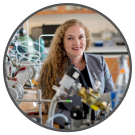
Faye McNeill (Co-Lead Chair)
Columbia University, Professor
V. Faye McNeill is a Professor and Vice Chair in the Department of Chemical Engineering and a professor in the Department of Earth and Environmental Sciences at Columbia University. She is also Principal Investigator of the Columbia University Clean Air Toolbox for Cities Initiative. She joined Columbia in 2007 and received tenure in 2014. She received her B.S. in Ch.E. from Caltech in 1999 and her PhD in Ch.E. from MIT in 2005, where she was a NASA Earth System Science Fellow. From 2005-2007 she was a postdoctoral scholar at the University of Washington Department of Atmospheric Sciences. She received the NSF CAREER and the ACS Petroleum Research Fund Doctoral New Investigator awards in 2009. She was the recipient of the Kenneth T. Whitby Award of AAAR in 2015 and the Mellichamp Emerging Leaders lectureship at UCSB in 2018. She was named Fellow of the Royal Society of Chemistry in 2023. She is the Associate Editor in charge of Atmospheric Chemistry for ACS Earth and Space Chemistry. She was a co-editor of Atmospheric Chemistry and Physics from 2007-2017. She has served in multiple elected officer positions in AIChE, AAAR, and AGU, including Vice President (2022-2023) and President (2023-2024) of AAAR. She is an appointed member of the IUPAC panel on kinetic data evaluation and the ACS Committee on Environmental Improvement.

Andreas Zuend (Co-Lead Chair)
McGill University, Associate Professor
Andi Zuend is a Professor in the Department of Atmospheric & Oceanic Sciences at McGill University in Montreal, Canada. He obtained a Diploma in Environmental Systems Sciences (2003) and a PhD degree in Atmospheric Chemistry (2008), both from ETH Zurich, Switzerland. He is interested in understanding various physicochemical aerosol processes and their model representations, primarily to advance our understanding of air quality and aerosol-cloud-climate impacts. Andi’s research group works on the thermodynamic and kinetic box and/or 3D modeling of multicomponent, multiphase aerosols. Projects include applications and development of predictive methods for equilibrium gas-particle partitioning and liquid-liquid phase separation, phase viscosities, bulk-surface partitioning, hygroscopic growth and cloud droplet activation, and the development of reduced-complexity frameworks for organic aerosols representations.
Additional Committee Members

Jeremy Avise
CARB, Modeling and Meteorology Branch Chief
Dr. Jeremy Avise is Chief of the Modeling and Meteorology Branch at the California Air Resources Board (CARB). Jeremy leads a team of scientists, engineers, and meteorologists who are responsible for conducting regional and local scale modeling in support of State Implementation Plan (SIP) development for ozone and PM2.5, regulatory/rule development, air toxics risk assessments, and CARB’s Community Air Protection Program. In addition, Jeremy’s team oversees the State’s Smoke Management program for agricultural and prescribed burning.
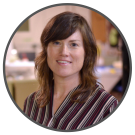
Kelley Barsanti
NCAR, Research Scientist
Dr. Kelley Barsanti is a Scientist at the National Center for Atmospheric Research (NCAR) in the Atmospheric Chemistry Observations and Modeling (ACOM) Laboratory. Prior to joining ACOM, she was an Associate Professor at the University of California Riverside (UCR). Dr. Barsanti has developed a research program contributing comprehensive measurements of gaseous organic compounds from understudied sources (e.g., wildland fires) and during critical time periods (e.g., COVID shelter-in-place); and building mechanistic models to explain laboratory and field observations of atmospherically relevant organic gasses and particles. Much of Dr. Barsanti’s recent work has focused on emissions and air pollutant formation from wildfires. She is currently focused on the development of community tools and resources that will serve a more diverse and expansive group of users and promote greater impact of ongoing research efforts in her own lab and across research communities. These efforts are particularly important given the increase in the frequency and severity of wildfires, as well as the complexity associated with developing scientific understanding, reliable modeling tools, and appropriate mitigation strategies.

Thomas Berkemeier
Max Planck Institute for Chemistry, Research Group Leader
Thomas Berkemeier is a research group leader at the Max Planck Institute for Chemistry, Mainz, Germany. His research is centered around the mathematical description of multiphase processes in the atmosphere and the human body. His research team develops kinetic models and conducts laboratory experiments with the goal of understanding the chemistry and physics of atmospherically- and health-relevant processes at and across interfaces. The modelling of detailed chemical, physical and biological processes is supported by data-centric approaches and algorithms, including machine learning.

Chenxia Cai
CARB, Regional Air Quality Modeling Section Manager
Chenxia Cai received her PhD in Atmospheric Science from State University of New York at Albany. She has applied air quality models to study various topics related with the formation of ozone and particulate matters. Chenxia is currently the manager of the Regional Air Quality Modeling Section in California Air Resources Board (CARB). Her section is responsible for carrying out the state-of-the-science meteorology and air-quality modeling required for control strategy evaluation and development, pollution transport assessment, and State Implementation Plan (SIP) updates for all criteria pollutants and regional haze in California. Her section also provides modeling support for all major field studies in California as well as other research activities at CARB.

Chris Cappa
UC Davis, Professor
Professor Cappa is interested in quantifying and understanding the processes that control the emission, evolution, and impacts of atmospheric aerosols. The Cappa group carries out laboratory and field studies, and develops and applies simple models, to characterize and predict aerosol physical, chemical and optical properties. Their work informs the development of more effective air pollution control strategies and air pollution and climate models, and provides insights into the atmospheric behavior of small particles.
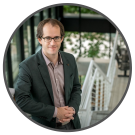
Daven Henze
University of Colorado, Boulder, Associate Professor
Dr. Daven Henze is an associate professor and the S. P. Chip and Lori Faculty Fellow in the Department of Mechanical Engineering at the University of Colorado Boulder. He holds a Ph.D. in Chemical Engineering from Caltech. Prior to joining the faculty at CU Boulder he was an Earth Institute Postdoctoral Fellow at Columbia University, where he worked at the NASA Goddard Institute for Space Studies. Dr. Henze’s research focuses on air quality, long-range pollution transport, and climate change. This encompasses more specific interests in remote sensing, adjoint sensitivity analysis, inverse problems, and source apportionment. Dr. Henze has received an EPA Early Career award and a NASA New Investigator award. He is the lead scientist for the GEOS-Chem adjoint model, a member of the GEOS-Chem Steering Committee, a member of the EPA Clean Air Scientific Advisory Committees (CASAC) for Lead and SOx/NOx, and a member of the NASA Earth Science Advisory Committee (ESAC).

James (Jim) Kelly
US EPA Office of Air Quality Planning & Standards, Researcher
Jim is an Environmental Scientist with the U.S. Environmental Protection Agency where he leads the Air Quality Assessment Division's PM NAAQS Review Team. Prior to this, he held positions at the California Air Resources Board, Lawrence Livermore National Laboratory, and the CIIT Centers for Health Research related to air quality modeling and particle dosimetry. Jim earned a PhD from UC Davis with a dissertation on water uptake by atmospheric particles

Tinja Olenius
Swedish Meteorological and Hydrological Institute (SMHI), Researcher
Tinja Olenius is a research scientist at the Swedish Meteorological and Hydrological Institute (SMHI). Her research interests include aerosol physics and air quality modeling from molecular processes to box models and large scale. The current work on aerosol modeling focuses on new-particle formation dynamics and growth of newly-formed molecular clusters to larger nanoparticles, as well as implementing process-scale results in larger-scale models to improve the description of aerosol sources and number concentrations.
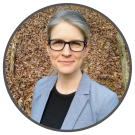
Havala Pye
US EPA, Research Scientist
Dr. Pye is a research scientist in the US EPA Office of Research and Development where she uses computer models to understand what governs chemicals in air: from emissions through chemical and physical transformation and ultimately removal. She is currently leading efforts to build a new chemical mechanism for use in CMAQ and that couples gas and organic aerosol chemistry. Dr. Pye is a recipient of a Presidential Early Career Award for Scientists and Engineers, the highest honor bestowed by the U.S. government on outstanding scientists and engineers beginning their independent careers. Dr. Pye received her PhD in 2011 in Chemical Engineering with a minor in Environmental Science and Engineering from the California Institute of Technology. More information about her work is available at https://havalapye.wordpress.com/.

Nicole Riemer
University of Illinois at Urbana-Champaign, Professor
Nicole Riemer is a Professor at the Department of Atmospheric Sciences and an Affiliate of the Department of Civil and Environmental Engineering at the University of Illinois at Urbana-Champaign. She received her Doctorate degree in Meteorology from the University of Karlsruhe, Germany. Her research focus is the development of computer simulations that describe how aerosol particles are created, transported, and transformed in the atmosphere. Her group uses these simulations, together with observational and satellite data, to understand how aerosol particles impact human health, weather, and climate. She has received the NSF CAREER award, the AGU Ascent Award, and the College of Liberal Arts & Sciences Dean’s Award for Undergraduate Teaching. She is an editor for Aerosol Science & Technology and for the Journal of Geophysical Research.

Karine Sartelet
Centre d'Enseignement et de Recherche en Environnement Atmosphérique, Researcher
Karine Sartelet is a research scientist at CEREA, Ecole des Ponts, France. She received her PhD from Cambridge University (UK) in 2002, and was a postdoc fellow at CRIEPI (Japan) in 2004-2005. For the past two decades, her research has focused on modelling aerosols at different spatial scales (regional and local), taking into account the formation and evolution of ultrafine particles, as well as the properties of aerosol compounds, particularly for gas-particle partitioning (e.g. affinity with water, mixing state), and their interactions.

Sam Silva
University of Southern California, Assistant Professor
Sam Silva is an assistant professor in the Department of Earth Sciences and the Department of Civil and Environmental Engineering at the University of Southern California. His research is focused on air pollution and climate change, with particular interest in the convergence of traditional computational methods with modern data science and artificial intelligence techniques.
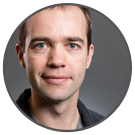
Christopher Tessum
University of Illinois, Professor
Dr. Christopher Tessum joined the CEE department as an Assistant Professor in January 2020. His research focuses on modeling air pollution and its health impacts, quantifying inequities in the distribution of those impacts, and proposing and testing solutions. He studies the relationships between emissions, the human activities that cause them, and the resulting health impacts, and he develops modeling capabilities to enable these types of analyses.
Before joining UIUC, Dr. Tessum was a research scientist in the Department of Civil and Environmental Engineering at the University of Washington in Seattle and a postdoctoral researcher in the Department of Bioproducts and Biosystems Engineering at the University of Minnesota. He received a Ph.D. (2014) in Civil, Environmental and Geo- Engineering, and a B.M.E. in Mechanical Engineering (2006), from the University of Minnesota

Knut Von Salzen
Environment and Climate Change Canada (ECCC), Senior Research Scientist
Dr. Knut von Salzen is a senior research scientist at the Canadian Centre for Climate Modelling and Analysis (CCCma) at Environment and Climate Change Canada in Victoria, British Columbia. His current research interests are focused on short-lived climate forcers (SLCFs) and Arctic climate. He is the lead author of a recent report chapter on the impacts of SLCFs on Arctic climate and air quality by the Arctic Monitoring and Assessment Programme (AMAP). Throughout his career, he has contributed to the development and use of aerosol and cloud modeling capabilities in climate and air quality models.

Dan Westervelt
Columbia University, Assistant Research Professor
Dr. Daniel M. Westervelt is an Assistant Research Professor at Lamont-Doherty Earth Observatory (LDEO). Dr. Westervelt is also an affiliate faculty member of the Columbia University Data Science Institute, an affiliated scientist with NASA Goddard Institute for Space Studies, and an air pollution advisor to the US State Department. He is also a Columbia University Climate and Life Fellow. His current research spans from air quality and climate modeling to deployment and calibration of low cost sensors for air quality. Prior to his faculty position at Lamont-Doherty Earth Observatory, he worked as an Associate Research Scientist at LDEO, and as a Science, Technology, and Environmental Policy (STEP) postdoctoral research associate at Princeton University. He completed his PhD degree in May 2013 in Civil and Environmental Engineering from Carnegie Mellon University.